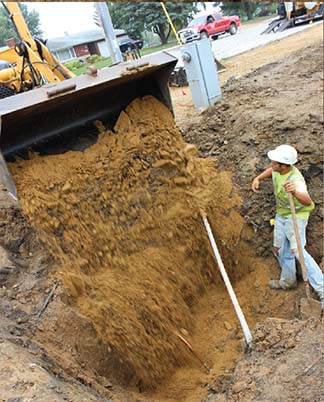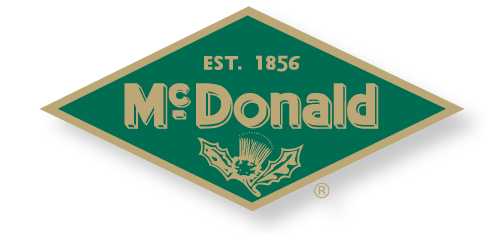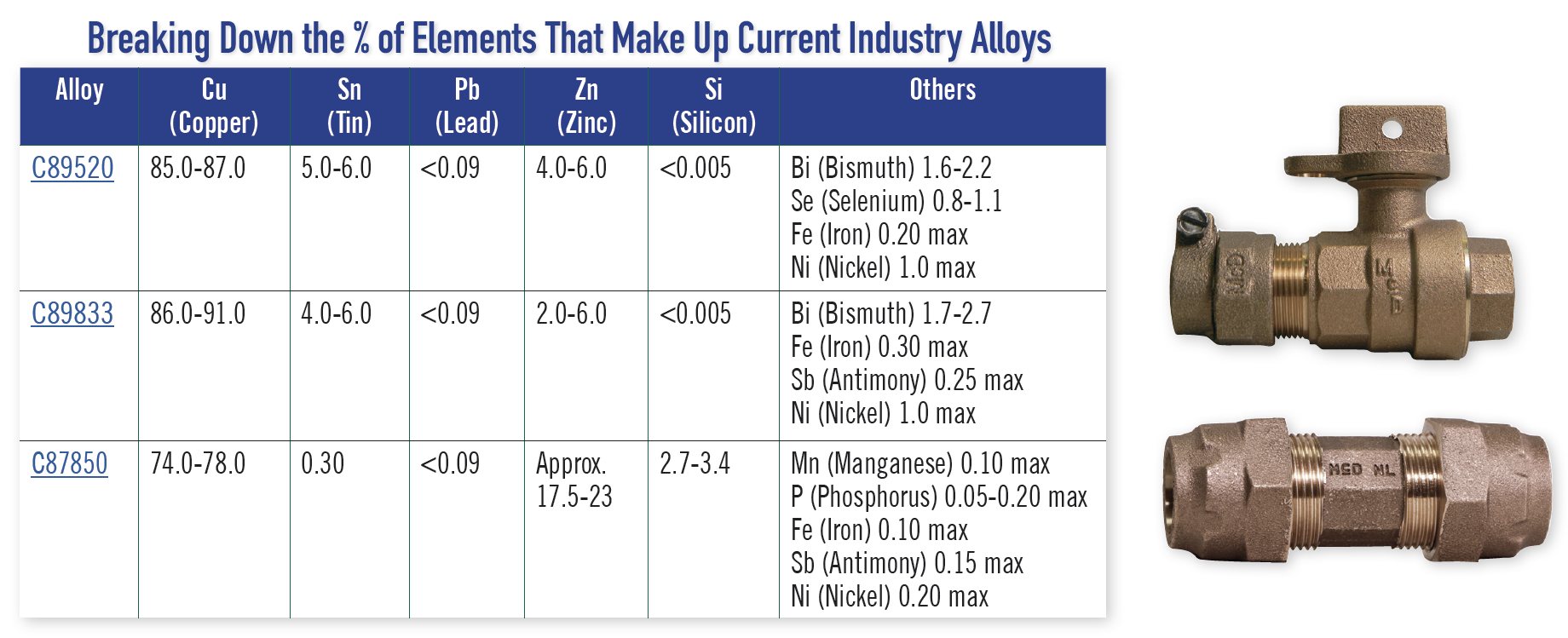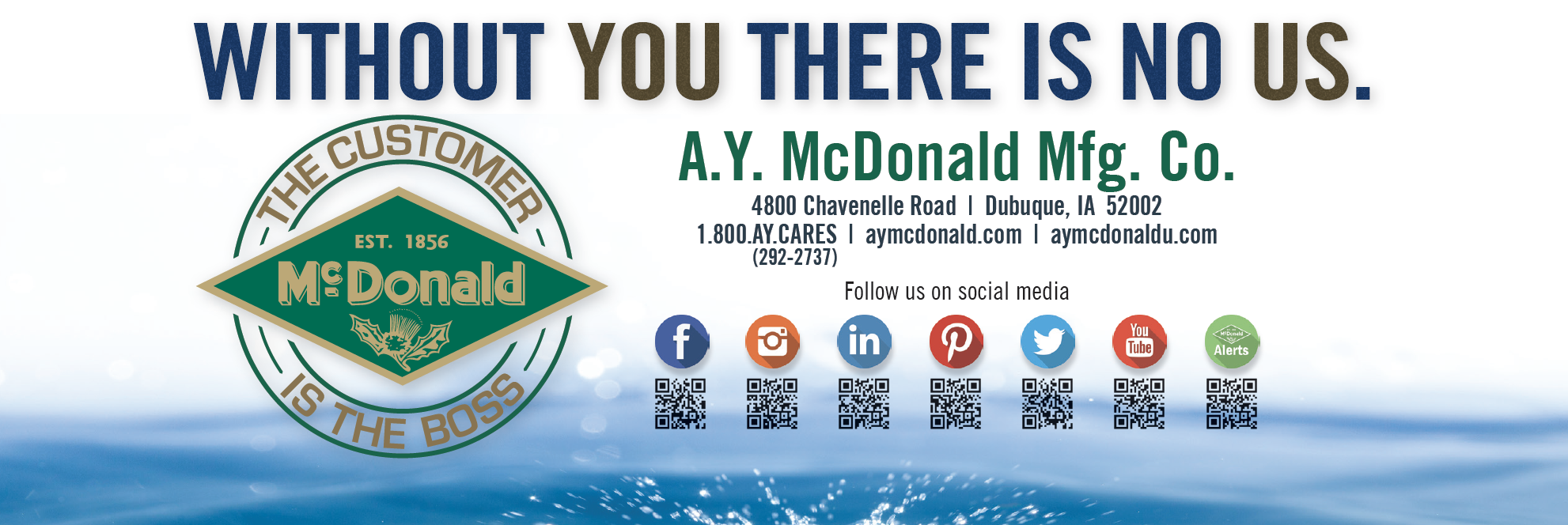Burying the Myths Surrounding High Copper No-Lead Brass Alloys

Burying the Myths Surrounding High Copper No-Lead Brass Alloys


A.Y. McDonald currently utilizes the C89833 alloy for our no-lead water works products. Prior to that, we used C89520 from the 1990’s to 2005. Both are high copper alloys, also known as red brass, that are backed by many years of history of usage in underground systems. In fact, red brass itself has stood over a century of underground use. Both alloys contain bismuth to replace the lead, which achieves pressure tightness and machineability. We chose them because they have similar mechanical and casting properties, along with similar copper, tin, and zinc chemical content and corrosion resistance to A.Y. McDonald’s traditional leaded alloy, C83600, which has worked in underground environments for more than a century. The C89833 and C89520 no-lead alloys have now successfully worked in underground environments for 20+ years.

Silicon Brass (C87850) - Low Copper, High Zinc No-Lead Brass Alloy
Some manufacturers are pushing to use a lower copper, higher zinc alloy (known as C87850) for underground water works applications. This alloy is being introduced by manufacturers that make both hydrant and valve parts as well as underground utility brass. For them, it’s easier to pour one no lead alloy rather than two, in addition to the fact that producing low copper alloys may be more affordable for the manufacturer. Lastly, some manufacturers are under the impression that the worldwide supply of Bismuth is dwindling even though it’s not.
Copper alloys with a lower level of copper and a higher zinc content appear more yellow and are commonly used above ground in North America for applications such as in-home plumbing. While C87850 may be proven and appropriate for a wide variety of uses, including internal hydrant parts, it has not been subjected to widespread validation when buried underground in aggressive soils and aggressive water conditions in the United States.
Why A.Y. McDonald is Not Ready to Commit to Low Copper, High Zinc No-Lead Brass Alloys
Bismuth is Not Going Anywhere
The element, Bismuth, has a variety of uses, but the supply of this material is largely misunderstood. While we may only produce Bismuth in a handful of countries, research shows that it is geologically available in many more countries. Simply changing our approach within the mining industry could lead to the discovery of a lot more Bismuth, along with other by-product critical metals. A.Y. McDonald and our brass material providers have never experienced a supply shortage of Bismuth in all the years we have been producing the C89833 and C89520 copper alloys.
- Lack of History of Use in North America
The brass alloys A.Y. McDonald currently utilizes have worked underground for multiple decades. However, the same can’t be said for C87850 in North America. A similar material to C87850 is currently used in parts of Germany for buried water works applications since 2008.
While the German experience has been a success, their soil conditions may vary from those in North America, as do their industry standards. Portions of North America contain aggressive soil and water conditions. Therefore, the comparison of a similar material use in Germany to the potential use of C87850 in North America is like comparing apples to oranges.
In Conclusion
A.Y. McDonald isn’t looking to risk our customers’ future just to chance making today easier for us. If the past 167+ years has taught us anything, it’s that our water infrastructure is not something to place bets on. While some manufacturers may find it convenient to pour their utility brass from the same alloy they use for hydrant parts, sticking with the same tried and true high copper, low zinc, readily available alloy is the best choice for a company that is 100% focused on manufacturing and 100% focused on what benefits the customer rather than their own internal processes.
What can you do to protect your water system and ensure you receive the same High Copper alloy valves and fittings you’ve always used? Purchasers and specifiers can add material requirements such as a maximum zinc content if they wish to eliminate the risk of receiving an unproven copper alloy for water works brass applications. At the end of the day, it’s better to be safe than sorry when it comes to the fate of our own water!

